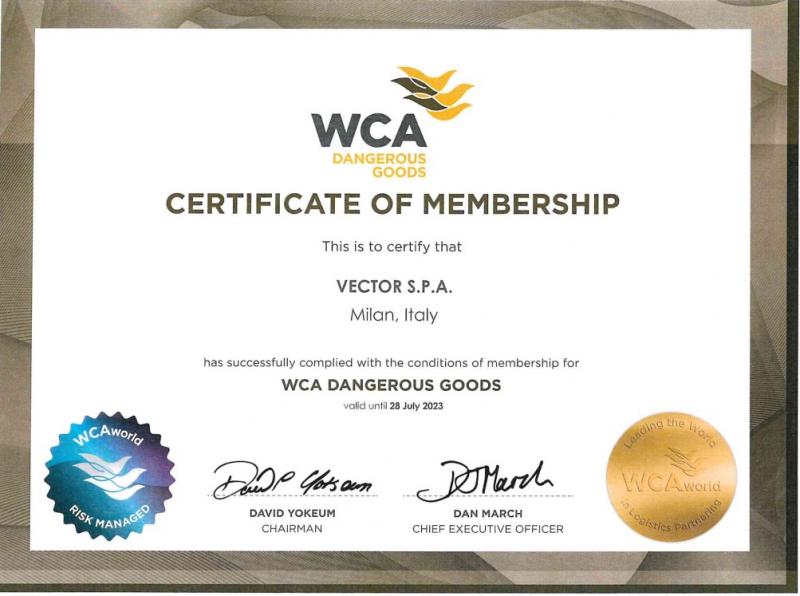Reparto vendite e custom careIn this job, you never stop learning!
Our staff are continually updated regarding ADR regulations, so as to guarantee that procedures are carried out correctly and in accordance with applicable laws.
We provide ground, sea and air transportation for the various classes of dangerous goods, included Class 1 (Explosives) and Class 7 (Radioactive).
We guarantee the best possible consultancy for our clients with regard to the delivery of dangerous goods, focusing in particular on the types of packaging, labeling and necessary documentation.
We have licensed trucks for pick up and delivery, packing capabilities, and a team focused on documents compliance.
We have also a vertical division specialized in class 1 and IATA FORBIDDEN classified goods.
AIR TRANSPORT REGULATIONS
There are three rules that regulate air transportation and determine what is acceptable, and under what circumstances.
ICAO: The International Civil Aviation Organization is an independent United Nations agency in charge of developing the principles and techniques of international air navigation, routes and airports. It also promotes the planning and development of international air transport, in order to make it safer and orderly. The 18 ICAO Attachment at the Chicago Convention entitled “The Safe Transport of Dangerous Goods by Air” defines the general principles that establish whether the goods are acceptable for air transport.
IATA: The International Air Transport Association is an international unions of airline companies whose purpose is to represent, guide and serve the airline industry. IATA regulates the transport of dangerous goods and publishes the IATA Dangerous Goods Regulations Manual, which is a universal reference manual that regulates the shipment of dangerous goods.
ENAC: The Ente Nazionale per l'Aviazione Civile is the only Italian authority that regulates techniques, certification, survelliance and control in the sector of civil aviation. ENAC guarantees that the principles and norms established at the international level are adhered to.
SEA TRANSPORT REGULATIONS
Maritime transportation also has various guidelines that regulate the procedures that permit shipping dangerous goods. They guarantee that transportation remains safe, efficient and in accordance with preventive policies regarding maritime pollution from ships.
IMO: The International Maritime Organization (IMO) is a specialized agency of the United Nations that is responsible for the development of an international maritime shipping industry.
Among the various responsibilities of this organization is the updating of the International Maritime Dangerous Goods (IMDG) code. This international code, for maritime transportation of dangerous goods, was adopted in order to protect the lives of the sailors and prevent environmental pollution.
The countries of the United Nations adopt the IMDG together with two other conventions dedicated to maritime safety and prevention of environmental pollution: the Safety of Life at Sea Convention (SOLAS) and the International Convention for the Preservation of Pollution from Ships (MARPOL).
In Italy, the General-of-Command of the Port Authority is the person who deals with port and maritime activities, the safeguarding of human lives at sea, the protection of the marine environment and its ecosystems, as well as safe maritime navigation and transportation.
RAIL AND ROAD REGULATIONS
The main regulations document recognized at the European level, and which regulates ground transportation of dangerous materials, is the European Agreement concerning the International Carriage of Dangerous Goods by Road (ADR). It deals both with the regulations regarding packaging and labeling of dangerous goods, and the construction, equipping and operation of the vehicles used for transport.
Rail transportation is, instead, regulated, improved and facilitated by the Intergovernmental Organisation for International Carriage by Rail (OTIF). During the Vilnius Protocol in 1999, the “Regulations Concerning the International Carriage of Dangerous Goods by Rail” (RID) were written. These guidelines regulate the transport of dangerous materials by railway.
In Italy, in addition to the recognition of the European Community's regulations, the transportation of dangerous materials, especially if radioactive, toxic or explosive, is subject to specific nationwide laws issued by the Minister of Infrastructure and Transportation.
